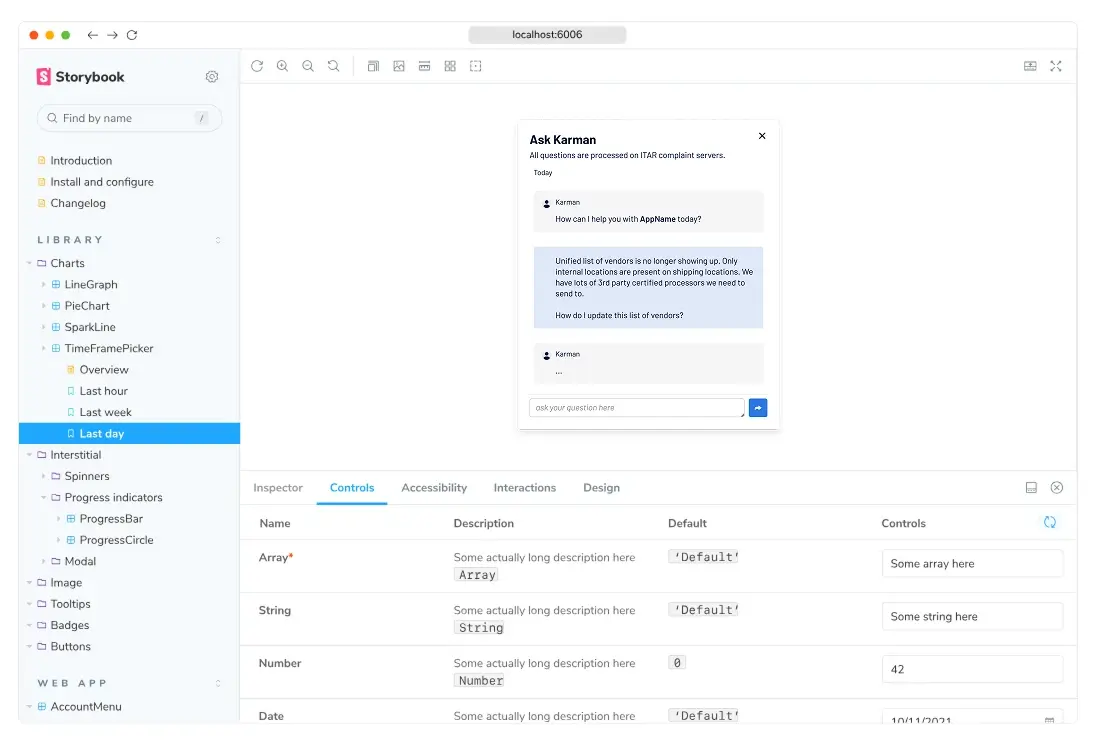The Blue Origin UX Design System Rockets ERP AI Design Systems
As UX Designer & technologist, I led the creation and adoption of the Blue Design System, a Figma-based, React-integrated framework powering over 50 internal applications. This system enabled Blue Origin to harmonize digital experiences, accelerate innovation, and empower teams to deliver user-friendly, consistent, and scalable solutions across the organization.
Design System Overhaul
Revamped core design system in Figma, migrating legacy patterns to modern, accessible standards with comprehensive documentation.
Cross-Functional Collaboration
Partnered with engineering to document reusable React components, reducing development time by 28% across teams.
AI Document Engine
Launched AI-powered document processing system, saving up to $250k per instance through automated workflows.
Figma Plugin Development
Created custom Figma plugins to automate standards enforcement and accelerate development workflows across teams.


Problem
Blue Origin's engineering-driven culture produced dozens of critical internal systems created in silos, often at the expense of user experience and long-term maintainability. This led to inefficiencies, onboarding delays, and mounting technical debt, highlighting the urgent need for a universal design system and better knowledge management.
Solution
I defined and championed the vision for a unified design system and knowledge platform, aligning design goals with Blue Origin's mission and operational priorities. The Blue Design System was architected in Figma and integrated with React, enabling seamless collaboration and rapid prototyping. Custom Figma plugins automated standards enforcement and accelerated development workflows, while a scalable information architecture supported future growth.
Impact
- 50+
- Applications Supported
- 65%
- CSAT Improvement
- $250k
- Cost Savings
- 28%
- Development Time Saved
Technology
We selected proven, widely supported technologies to ensure adoption and success:
Evangelism

I built trust by evangelizing the design system's value, hosting office hours, running workshops, and providing comprehensive documentation. My approach focused on these principles:
- Alignment and Consistency
- Efficiency and Productivity
- Reduction of Silos
- Scalability
- Onboarding and Training
- Continuous Improvement
I promoted the system as a "service" available to the company, ensuring teams saw immediate value and support.
Enabling Cross-Team Collaboration
The design system became a shared language for designers, developers, product managers, and stakeholders, breaking down silos and fostering alignment. This synergy enabled teams to deliver exceptional user experiences at scale.
Efficiency in Design and Development
With a centralized repository of design elements and guidelines, teams streamlined creation processes, reduced redundancy, and minimized errors, especially valuable for large-scale applications and diverse teams.
Consistency in Approach and Accessibility
The phrase "what comes for free" captured the system's value: teams received robust, accessible, and consistent solutions out-of-the-box, maintained by a dedicated UX team.
AI-Powered Application
I led the design and deployment of a secure and local AI-powered app, leveraging a custom large language model (LLM) trained on Blue Origin's proprietary documentation and tribal knowledge. Integrated into the design system, this tool enabled manufacturing teams to access relevant information in real time, institutionalizing decades of informal expertise and driving productivity gains.
Successes
Our efforts produced measurable impact across the organization:
- Developer satisfaction increased significantly, especially among teams lacking dedicated engineers.
- Project timelines reduced from a month to days on key initiatives.
- Onboarding accelerated from weeks to hours for new team members.
- Internal apps passed audits more consistently, with fewer red flags.
- The AI app institutionalized tribal knowledge, reducing reliance on individual experts and improving manufacturing throughput.
Leadership & Learnings
I mentored junior designers and developers, fostered a culture of user advocacy, and presented outcomes to business leaders to drive adoption. Overcoming initial resistance required transparency, hands-on workshops, and continuous evangelism. Early and frequent alignment was critical to achieving organization-wide impact.
Conclusion
By leading the creation of a scalable design system and integrating AI-powered knowledge tools, I enabled Blue Origin to harmonize its internal digital landscape, accelerate innovation, and unlock the full potential of its teams. This work exemplifies my approach as a principal UX leader, driving business outcomes through strategic vision, cross-functional collaboration, and measurable impact.